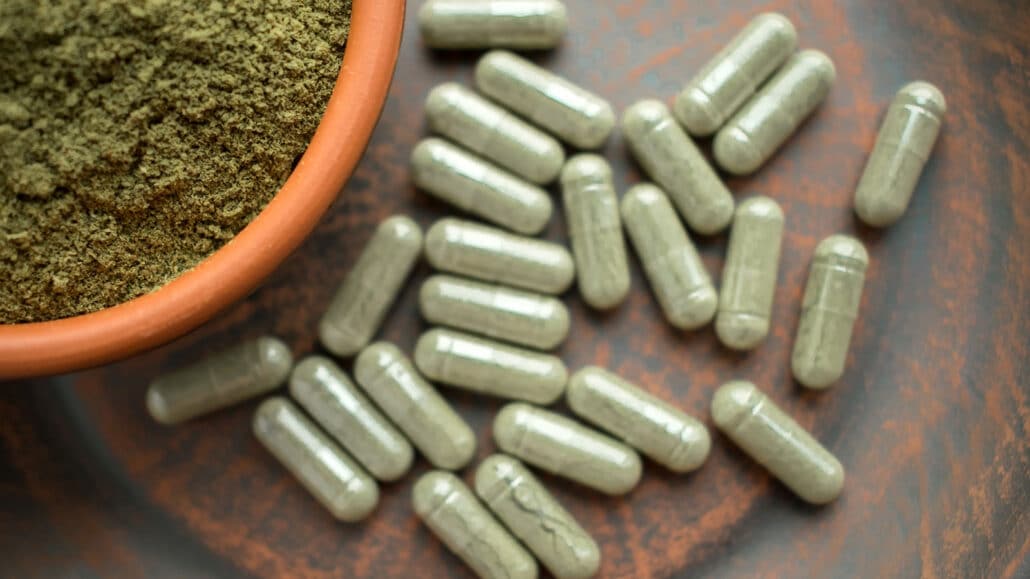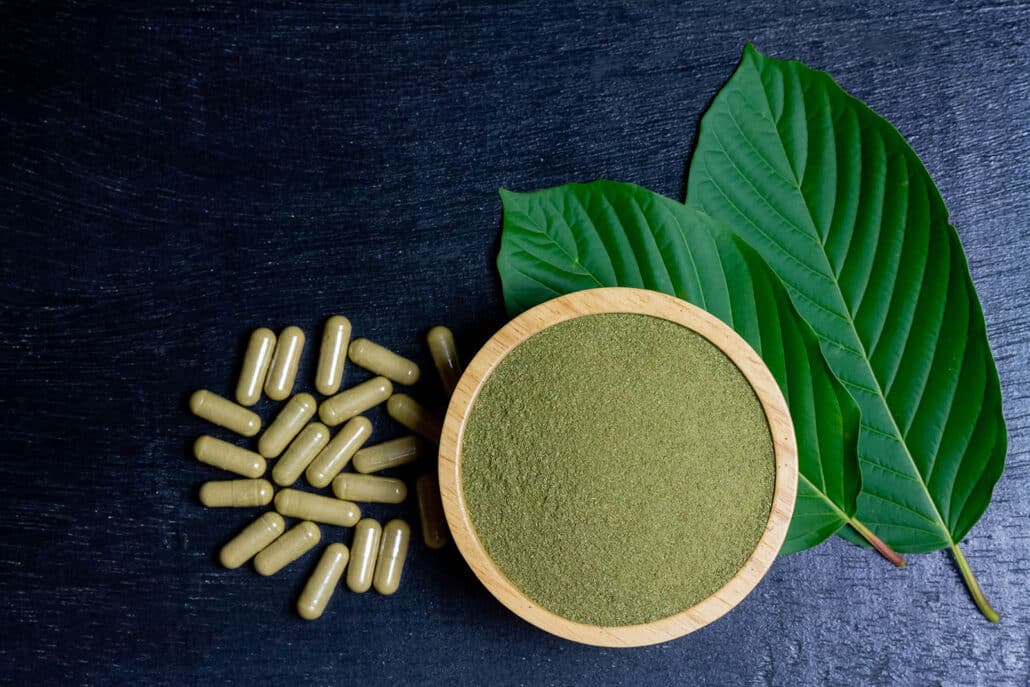Kratom is a plant native to Southeast Asia that has mind-altering, opioid-like effects on the nervous system.
Despite its legal status in some states, kratom has a serious addictive potential and can lead to strong dependence and severe withdrawal symptoms.
If you or a loved one is struggling with kratom addiction in New York, you’re not alone, and this guide is here to help you.
Keep on reading for a comprehensive overview of the substance, including a wealth of information about its symptoms, causes, addictive potential, and possible treatments in the state.
Table of Contents
- 1 A Brief Overview of Kratom and Its Mechanism of Action
- 2 Is Kratom Legal in New York?
- 3 Is Kratom Addiction Dangerous?
- 4 The Statistics of Kratom Addiction in New York
- 5 What Are the Factors Leading to Kratom Addiction?
- 6 How to Identify Kratom Addiction
- 7 Kratom Addiction Treatment Options
- 8 Important Notes to Keep in Mind About Kratom Addiction Treatment
- 9 Conclusion: Finding the Best Treatment Center for Kratom Addiction in New York
A Brief Overview of Kratom and Its Mechanism of Action
One of the critical steps to fight drug addiction is understanding the drug and how it affects the brain.

Kratom, also known as “Mitragyna speciosa,” is a tropical plant native to Southeast Asia. The plant’s leaves contain unique alkaloids like mitragynine and 7-hydroxymitragynine.
These chemical compounds produce stimulant effects at low doses and sedative effects at higher doses, which is similar to how opioids work.
The plant’s leaves exert their effect by entering the bloodstream either through chewing or smoking. The leaves are also crushed into powder and consumed as tea, in food, and as capsules.
Is Kratom Legal in New York?
Kratom is not a controlled substance and is still legal in New York as well as on a federal level. However, the state passed a bill restricting its sale to individuals under the age of 21 years old.
Traditionally, kratom is claimed to have a variety of effects, including pain relief, anxiety reduction, and boosting energy levels.
However, the U.S. Food and Drug Administration (FDA) doesn’t approve the drug for any medical use and didn’t establish its safety or efficacy while treating any of these medications.
Is Kratom Addiction Dangerous?
The main problem with Kratom use is that continued use can lead to physical dependence, where the body adapts to its presence and triggers withdrawal symptoms when you stop using it.
These symptoms can be intense and quite uncomfortable, especially with high-dose use and/or for long periods, including severe muscle aches, headaches, irritability, and insomnia.
Continuous use of Kratom can also lead to serious and life-threatening complications similar to those of opioid use disorders, such as respiratory depression, increased heart rate, seizures, hypertension, and liver toxicity.
The Statistics of Kratom Addiction in New York
Although kratom has been used for decades, it has been recently introduced to the United States, so there isn’t enough data documenting its use on a state level.
However, the previously mentioned bill suggests the growing concerns over kratom addiction in the state.
Additionally, the 2021 report by the Substance Abuse and Mental Health Services Administration (SAMHSA) offers a broader national perspective. It’s estimated that around 1.7 million people aged 12 and older consumed kratom in 2021.
As a result, the DEA classifies kratom as a drug of concern despite its still-legal status across the country.
What Are the Factors Leading to Kratom Addiction?
Treating substance use disorder starts with understanding what pushes individuals to use it. However, it’s also important to know that everyone’s causes and reasons might vary depending on their individual circumstances.
Here’s a general overview of the most common factors that may lead to kratom addiction:
- Easy Access: Since kratom is not illegal or controlled, acquiring the drug is much easier, which facilitates its use for recreational purposes or self-medication.
- Influence: Being surrounded by others (especially friends) who consume kratom can make it seem normal and tempting to try through peer pressure.
- Mental Health Conditions: Traumas, abuse, anxiety, depression, and going through difficult times might lead some individuals to use kratom as a way to cope.
- Family History of Drug Abuse: Plenty of scientific evidence shows that addiction is typically more likely among families with a history of drug abuse.
How to Identify Kratom Addiction
Identifying kratom addiction is all about the signs and symptoms associated with opioid addiction.
These signs can be classified into physical and behavioral symptoms. Here’s a quick look at the effects of kratom:
Physical Signs of Kratom Addiction
- Experiencing Kratom withdrawal symptoms upon cessation of kratom use
- Having a hard time falling asleep and staying alert for long periods of time
- Excessive fatigue from lack of sleep, especially after high doses
- Suffering from some digestive issues like diarrhea, nausea, and vomiting
- Over-excitement and being talkative against nature
- Difficulties maintaining a stable breathing rate
- Weight loss or fluctuations
- Heavy sweating and runny nose
- Shakiness or tremors
Behavioral Symptoms of Kratom Addiction
- Intense and continuous craving for kratom with a strong urge to find and consume the drug in any form
- Withdrawing from social activities
- Anxiety and depression
- Noticeable mood swings
- Emotional outbursts
- Having a hard time concentrating on tasks (more common in long-term use)
- Spending money on kratom despite financial difficulties

Kratom Addiction Treatment Options
The good news is that kratom addiction is treatable, although it takes a lot of patience and dedication to achieve long-term recovery.
Here are some of the most popular addiction treatment programs associated with kratom abuse:
1. Medical Detoxification
The goal of medical detoxification is to safely and completely remove kratom from the patient’s system.
The step is typically done under medical supervision to gradually reduce the drug dose because sudden cessation can be life-threatening.
Healthcare professionals can offer patients prescribed medications to alleviate the withdrawal symptoms. These medications include methadone, buprenorphine, and buprenorphine-naloxone.
Medication detoxification can take two forms:
- Inpatient Hospitalization Treatment: Ideal for individuals with severe kratom dependence or needing intensive medical support
- Outpatient Treatment: Allows individuals to remain at home during treatment, which is only suitable for mild conditions.
2. Individual Therapy
After detox, therapy is essential to identify and eliminate the thought patterns and behaviors leading to kratom use.
The treatments work by developing healthy coping mechanisms to avoid triggers and stay motivated during recovery. Individual or behavioral health therapy usually includes various forms, such as:
- Cognitive Behavioral Therapy (CBT): Showcases various forms and techniques to maintain self-control and avoid relapse.
- Dialectical Behavior Therapy (DBT): Targets emotional regulation and distress tolerance skills to stay sober.
- Motivational Interviewing: Encourages patients to stay motivated and committed to the changes they made in their life.
3. Group Therapy
Besides individual therapy, people suffering from recurring kratom addiction should also consider group therapy and support groups.
In these sessions, patients can receive encouragement and overcome isolation by sharing their stories and experiences with others who can relate to the same issues.
4. Sober Living Homes
Sober living homes provide a structured, drug-free environment after initial treatment where patients can feel safe and away from triggers while gradually returning to their daily lives.
This method is specifically effective for those who spent a long time in rehab and need some time to adjust.
5. Complementary Treatments
Many rehabilitation centers will also provide holistic therapy to support primary treatment. These treatments help in improving the patient’s well-being, potentially lowering the risk of post-treatment relapse.
These can include a variety of forms, but the most popular ones are acupuncture, therapeutic massage, yoga, and meditation.

Important Notes to Keep in Mind About Kratom Addiction Treatment
Now that you know more about treating kratom, here are some additional notes to consider about this type of addiction:
Customized Treatment Plan
Each person’s journey with kratom addiction is unique and based on specific circumstances and history.
That’s why the treatment for each case should be customized to address their needs, as what works for one person may not work for another.
Medical professionals in reputable rehabilitation centers will create a custom treatment plan for each individual patient.
Involvement of Family
Family members can play a vital role in supporting recovery and making individuals suffering from addiction feel accepted and not alone.
Attending family therapy sessions together can strengthen their understanding of each other and encourage patients to maintain their sobriety.
Medical Supervision
Some individuals suffering from kratom addiction may try to treat their condition on their own. However, treating kratom addiction requires special care to avoid the dangerous side effects associated with its withdrawal symptoms.
That’s why having a qualified healthcare provider is essential during treatment, as monitoring patients can ensure safe and effective treatment, and adjust the treatment plan as needed.
Addressing Underlying Conditions
Kratom addiction typically stems from deeper roots like mental health problems and trauma.
Addressing these underlying issues along with the substance abuse treatment can increase long-term success after recovery.

Conclusion: Finding the Best Treatment Center for Kratom Addiction in New York
As you can see, the path toward kratom addiction treatment is quite challenging but not impossible.
With the right type of guidance, you’ll be able to navigate the path to recovery with greater clarity and support.
Long Island Interventions offers guidance every step of the way toward recovery with a variety of treatment options and plenty of resources to help patients and their families.
Please contact Long Island Interventions for information about Kratom Addiction Treatment near you.
References and Further Reading
- https://www.dea.gov/sites/default/files/2020-06/Kratom-2020_0.pdf
- https://www.nysenate.gov/legislation/bills/2021/A294
- https://www.fda.gov/news-events/public-health-focus/fda-and-kratom
- https://www.ncbi.nlm.nih.gov/pmc/articles/PMC8319032/
- https://www.samhsa.gov/data/sites/default/files/reports/rpt39443/2021NSDUHFFRRev010323.pdf
- https://www.ncbi.nlm.nih.gov/pmc/articles/PMC9731175/
- https://www.ncbi.nlm.nih.gov/pmc/articles/PMC2897895/

